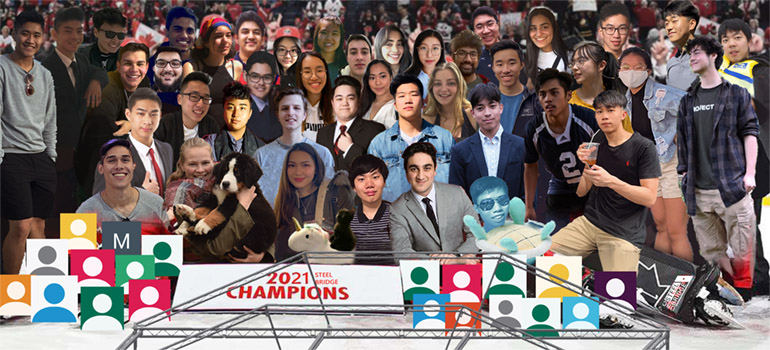The UBC Steel Bridge design team, comprised of 50 UBC Civil Engineering undergraduate and Master’s students, recently won first place at the 2021 Canadian National Steel Bridge Competition.
While the team had consistently placed in the top three in previous years, this was their first time winning the top prize. Supervised by faculty members Drs. Noboru Yonemitsu and Carlos Molina Hutt, the team competed against 11 other teams from Canada, Mexico, and China.
Due to COVID-19, the competition was held virtually for the first time. Rather than following a traditional format, the competition shifted its focus towards showcasing design, analysis, and construction sequence in a report and video format.
Over the past year, UBC Steel Bridge has had to adapt to only meeting virtually. Executives worked hard to deliver an engaging online experience, which included a recurring accessibility survey to ensure a smooth and enjoyable experience for all attendees.
“On the other hand, online meetings allowed members to attend from the comfort of their homes and from all parts of the world. As a result, we had the highest participation this year ever,” said team Co-Captains Cindy Khailor (Civil, ’21) and Davis Su (Civil, ’21).
UBC Steel Bridge’s winning design this year marked the first time in many years they successfully designed a “pony truss” bridge, which is a type of arched truss bridge.
“In the past, we’d always had trouble designing this type of bridge due to increased complexity compared to our typical designs,” said Khailor and Su, “We decided to take a risk this year.”
To make the design feasible, the team explored unique fabrication techniques such as laser cutting, which significantly reduced fabrication times. Previously, long fabrication time was a limiting factor.
“We hope these new techniques will allow us to develop even more complex designs in the future,” said Khailor and Su.
UBC Steel Bridge’s goal is to create a space for students to practice classroom skills such as engineering software, teamwork, and communication through working on real-life projects. The team seeks to cultivate the next generation of engineers by encouraging them to develop innovative solutions to classic structural problems.
“Often times, we learn about equations and analysis in school without realizing all the other factors that might affect a design’s behaviour once it’s built,” said Khailor and Su.
“We want to say a big thank you to our numerous sponsors; it takes a lot to get us to where we are. It’s all of you who contribute, even just a little, that allows us to have continued success and to support our members in learning important engineering skills,” said the captains.
Khailor and Su expressed excitement for the team to work together in-person again (COVID-19 situation permitting), and plan to create an even more engaging experience and a greater sense of community for UBC Steel Bridge members, alumni, and sponsors next year.
“We have a large number of members returning to the team next year, and incoming leads are inspired with plans to improve work efficiency, tutorials, and learning tools,” they said.
You may follow on UBC Steel Bridge on Instagram, Facebook, LinkedIn, and their website.
